Description of self-tapping screws "bugs" and their use
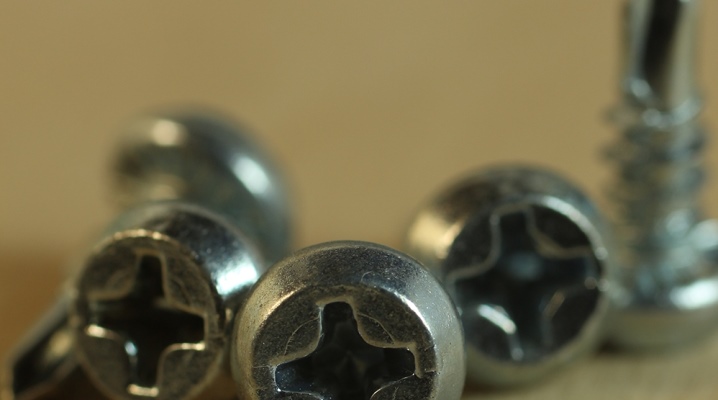
Self-tapping screws "bugs" are actively used in construction, furniture production and even electrical work. The clear advantages of miniature fasteners include their compactness, invisibility and the ability to quickly "immerse" in the materials being processed.

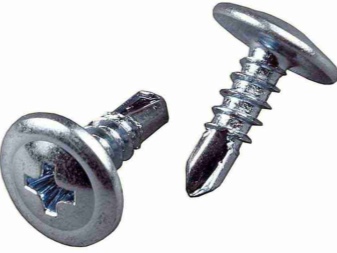
What it is?
Self-tapping screws "bugs" got their name for a reason. We are talking about fasteners of the smallest size, the length of which does not exceed 10-15 millimeters.... These screws are characterized by the presence of a flat, semi-cylindrical or slightly protruding cap, which allows you to reliably hide and fix the attachment point. Often a press washer is also present at the base of the fastener. There is a drill at the tip of the thread, which simplifies and speeds up the process of screwing into thin panels.
A special notch, located on the back of the head, prevents the self-tapping screw from turning out on its own. In most cases, "bugs" are made of oxidized metal. It is also possible to use a galvanized coating, which increases the material's resistance to environmental influences. It is customary to tighten small self-tapping screws with a screwdriver with a torque limiter. This tool allows you to protect the part from loss of the head, which will be extremely difficult to remove due to the size of the element.
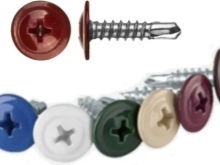
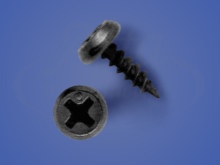
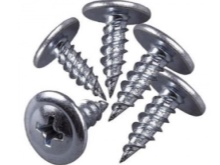
The name "bugs" got their name precisely due to the fact that they are compact and miniature in size. Squat because of the shortened thread, the parts, like insects, "crawl through everywhere" - that is, they are suitable even for concealed installation. Flat fasteners with a thin, small leg and a large head are completely invisible, as a result of which they do not spoil the appearance of the furniture. In principle, like real bugs, they quickly "scatter on the floor" when they fall, it is very difficult to catch them: dropping a small self-tapping screw, it is much easier to immediately take a new one than to search for a dropped part for a long time.
The self-tapping screw "bug" may have a drill tip. This variety is created from low carbon steel with phosphate and zinc spraying. The diameter of the fastener is either 3.5 or 3.9 millimeters. The length of the part can reach either 9.5 or 11 millimeters.
The hemispherical head is equipped with a Philips # 2 cross recess, ideal for use. The notches located below prevent self-turning.
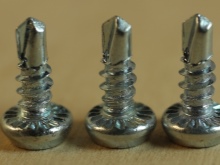
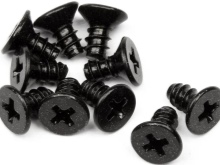
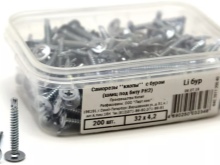
The specific thread of self-tapping screws with a drill has a small pitch, which makes it possible to reliably and tightly join materials. The tip of the "bug" allows you to fix profiles without preliminary perforation of holes, as it is capable of drilling holes provided the metal thickness does not exceed 2 millimeters.
Another variation of the "bug" is a self-tapping screw with a sharp tip. Compared to fasteners equipped with a drill, this type contributes to a more reliable fixation of elements. However, sometimes their use requires preliminary marking. These self-tapping screws are also made from low carbon steel and are also treated with either phosphate or zinc. The dimensions of these fasteners correspond to the dimensions of the bugs with a drill.
Several notches, located on the thread side of the head, not only prevent self-unscrewing, but also contribute to a tighter "docking".The sharp tip makes it possible to hold the self-tapping screw at the selected point, and then slightly pierce the sheet, after which direct twisting is carried out. Fine pitch threads easily cut the material without destroying it.
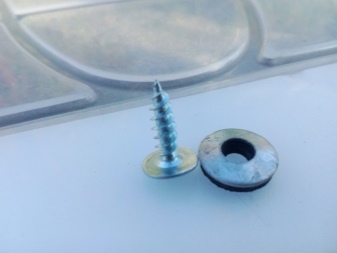
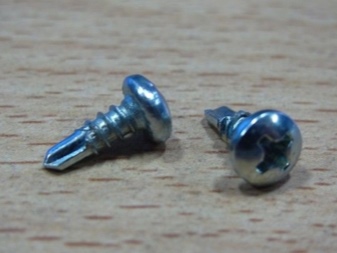
It should be added that a self-tapping screw with a pressed-on washer for metal is characterized by the presence of a reinforced cylindrical or hemispherical head. The length of such a "bug" ranges from 11 to 78 millimeters, and the thickness of the upper part does not go beyond 3.2-4.8 millimeters.
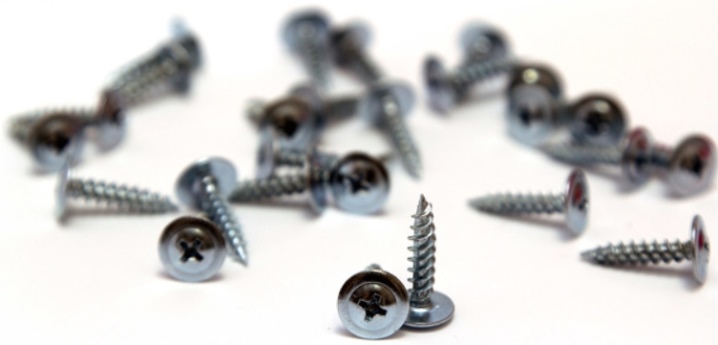
Applications
Drill-tipped bugs are best suited for metalworking, although they have a number of other uses. Mostly, they are chosen in order to fix thin sheets of metal or plastic on a structure made of wood or the same metal. Self-tapping screws with a drill are suitable in order to mount the base for a drywall structure, or to use metal-plastic products for decorating buildings.
"Bedbugs" with a pointed tip are suitable for fixing thin sheets of metal, plastic, fiberglass or textolite to metal, wood and plastic frames. For example, they can be chosen for the construction of plasterboard systems, fasteners for galvanized profiles or plastic sheathing. Sharp "bugs" are appropriate both in the production of furniture and in the implementation of electrical work.
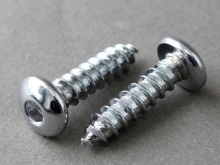

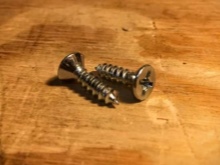
Cogs with a press washer are used when installing plasterboard structures, making windows, carrying out roofing work or plastic sheathing. Their use is also possible when creating furniture elements. This fastener provides the most reliable connection without damaging the surface. This is especially important when processing plastic elements, since it is the press washer that prevents the surface from deformation.
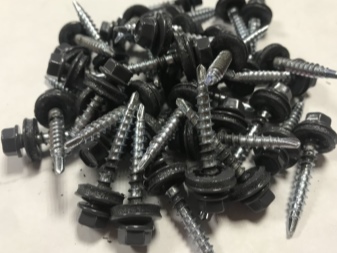
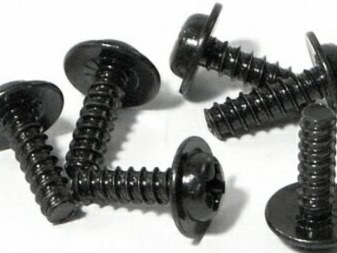
Coating
By themselves, the self-tapping screws "bugs" have increased durability, as they are made of an alloy of iron with carbon without impurities. Therefore, the coating applied to the fasteners is primarily responsible for the protective function. The extra layer helps prevent corrosion and, as a result, lengthens the service life.
The black color of the "bug" is due to the creation of a phosphate layer that improves the adhesion of the paintwork to the fasteners. Such self-tapping screws are perfect for painting and, painted with bituminous varnish, have enhanced protective characteristics. For example, they can be operated in high humidity conditions. However, it should be remembered that acids and alkalis destroy this phosphate film.
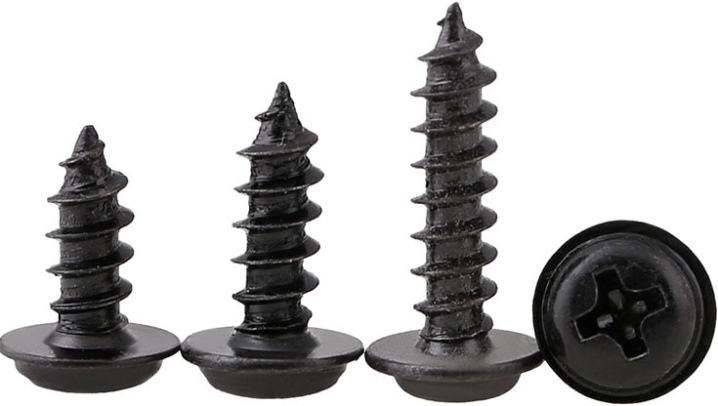
Self-tapping screws become white after galvanizing. In this case, with the help of zinc, only the upper layer of hardware is oxidized, from 4 to 20 microns. Using zinc oxide, it is possible to prevent further oxidation of self-tapping screws, which occurs under the influence of oxygen. Galvanized self-tapping screws can be brown or have a yellow tint.
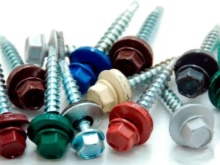
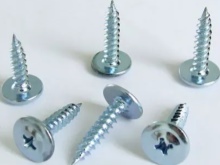
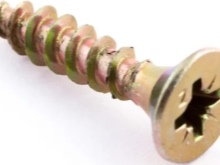
How to screw it on correctly?
Before you start tightening the screws, it is important to check that all elements differ in identity, including in size. The cross recess located on the head must be straight and evenly centered. It is extremely important that there are no chips and irregularities, since these very shortcomings can worsen the accuracy of screwing in and even ruin the screwdriver.
As for the "bugs" with a drill, it is more convenient to "bury" them in the metal using an electric unit that allows you to adjust the twisting force and adjust the rotational speed. The axis of the self-tapping screw and the axis of the equipment should be located at an angle of 90 degrees to the surface of the sheet into which the fastener is screwed. It should be checked that the bit insert tightly holds the self-tapping screw on the axis of the screwdriver or electric drill.
If you first place a magnetic attachment on it, then it will be possible to more reliably hold the element before twisting.The introduction of the "bug" begins at low rotation speeds, which gradually change to accelerated ones.

When the screwdriver is equipped with a force regulator, you can be sure that at the point of the tightest bonding of surfaces, the tool will stop by itself.
When working with "bugs" equipped with drills, at the preparatory stage it is important to properly clean the coating from third-party components that can interfere with a snug fit. In addition, when panels are attached to metal with a thickness of more than 2 millimeters, then the work should be carried out in two stages. First, a hole with a diameter of about 2.5 millimeters is created with a special drill for metal, and then "bugs" are used. If the screws are already screwed in, then you should not additionally attach sheet material on top, otherwise defects from the convex heads of the fasteners will appear on its surface.
When work is carried out using "bugs" with a pointed tip, you can use a cruciform bit insert instead of a screwdriver. This tool must be of good quality without damaging the working part. The self-tapping screw can be screwed into metal sheets, the thickness of which does not exceed 0.9-1.2 millimeters. When machining thicker surfaces, a hole with a diameter of approximately 2.5 millimeters is prepared with a pre-drill for metal.
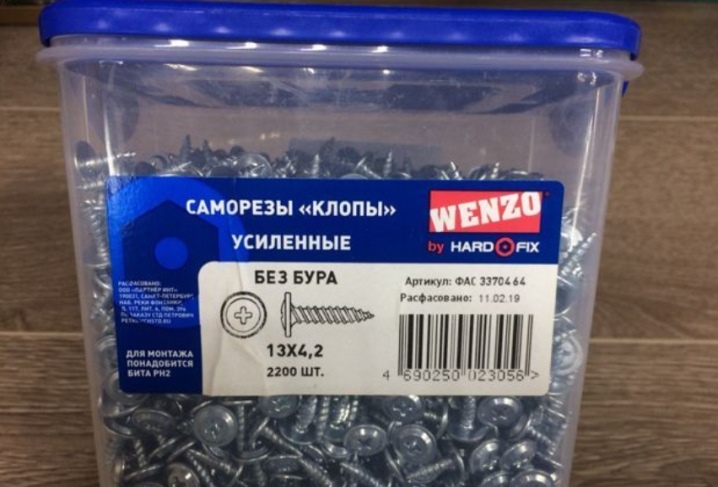
When a screwdriver or an electric drill is chosen instead of a bit, it must be ensured that the tool has the ability to adjust the rotation speed. As in the example with "bugs" with a drill, twisting starts at low speeds and continues at higher speeds. It is not recommended to use these fasteners on the planes of the supporting frame, on top of which it is planned to lay the cladding.
Having completed the tightening of any kind of self-tapping screw, it is recommended to slightly tighten it so that the notches located on the seamy side of the cap adhere to the material to be attached. By the way, it should be added that the fasteners can be screwed in only at 90%, so as not to deform the slot and not to rip off the cap.
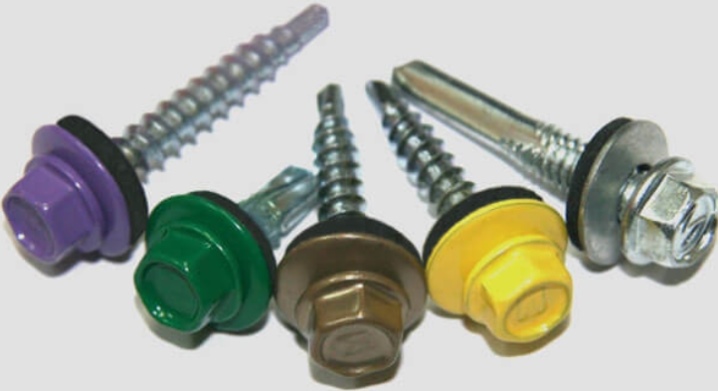
The next video tells about the "bugs" screws.













The comment was sent successfully.